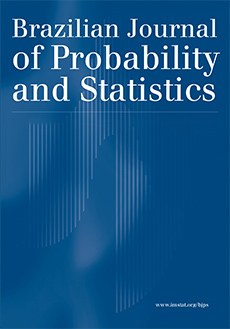Abstract
Given is the outcome $s$ of $S\sim{\mathrm{B}}(n,p)$ ($n$ known, $p$ fully unknown) and two numbers $0<a\leq b<1$. Required are probabilities $\alpha_{<}(s)$, $\alpha_{a,b}(s)$, and $\alpha_{>}(s)$ of the hypotheses $\mathrm{H}_{<}$: $p<a$, $\mathrm{H}_{a,b}$: $a\leq p\leq b$, and $\mathrm{H}_{>}$: $p>b$, such that their sum is equal to 1. The degenerate case $a=b(=c)$ is of special interest. A method, optimal with respect to a class of functions, is derived under Neyman–Pearsonian restrictions, and applied to a case from medicine.
Citation
Casper J. Albers. Otto J. W. F. Kardaun. Willem Schaafsma. "Assigning probabilities to hypotheses in the context of a binomial distribution." Braz. J. Probab. Stat. 30 (1) 127 - 144, February 2016. https://doi.org/10.1214/14-BJPS264
Information





